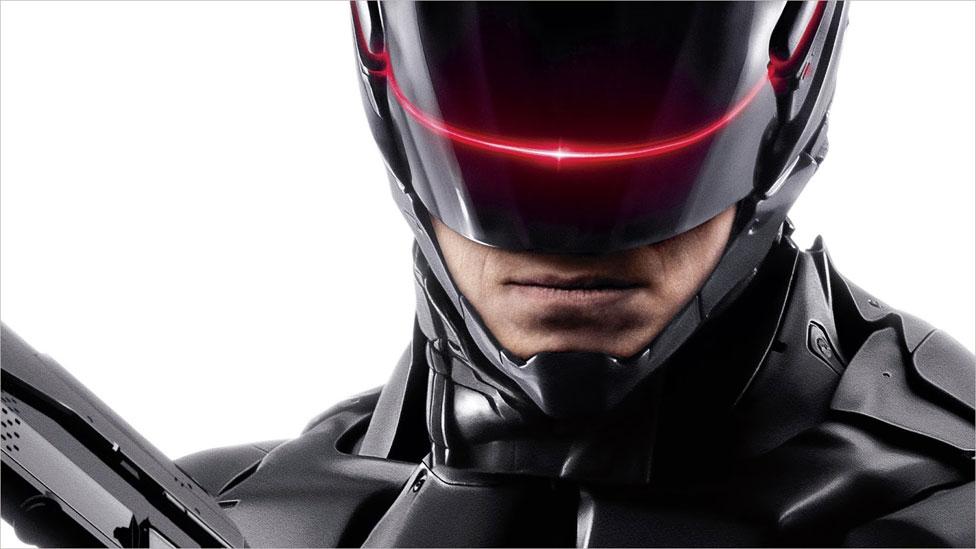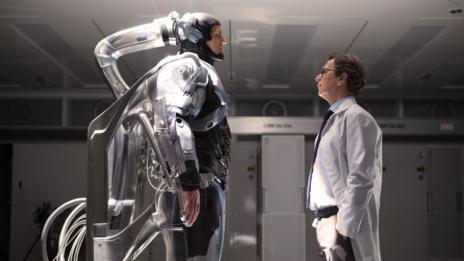
Reports that the ultimate crime enforcer may be on our streets soon is largely news hype, says Quentin Cooper. We’re more likely to see Robosnoop, not Robocop.
In the new reboot he’s called the “future of American justice”. In the far superior 1987 original he’s the “future of law enforcement”*. But is Robocop the future of anything?
Both versions of the movie explore how the war against crime might be turned by a man-machine cyborg, programmed to “serve the public trust, protect the innocent, uphold the law”. Even in 1987 this idea of robotically-enhanced policing wasn’t new, at least in fiction –I’m particularly fond of the late 1970s US sitcom Holmes & Yoyo, in which a cop with a habit of leaving his partners in hospital pairs up with an android specially programmed for police work. Since then other TV shows have embraced this premise including Future Cop, Mann & Machine, and most recently ongoing Fox series Almost Human, where in the year 2048 every cop is paired with an android.
Given our fondness both for police dramas and for stories where humans work alongside humanoid machines (Data in Star Trek, David in AI, David in Prometheus, plus many others not brought to you by the letter D) it’s easy to see why television and movie executives keep going back to the same premise. And they’re not the only ones.

Will we ever see Robocops roaming our streets? (MGM/Columbia)
Go a-Googling and you’ll find many, many references to “real-life Robocops” and articles about how police forces and defence agencies are already following in his clanking metal footsteps. This is largely journalistic hyperbole. To the best of my knowledge there is no current research on melding man and circuitry to create cyborg cops. And no-one even has plans to put armed robots on the beat, primed to laser anyone caught littering. What is advancing at a breathtaking pace, though, is the increasing use of automation and autonomy in policing and surveillance. Less Robocop, more Robosnoop.
Several robotics companies already offer a range of “law enforcement machines” – non-humanoid devices often deployed for surveillance in dangerous situations such as getting up close with suspected bombs. That’s the robot as merely a tool, but there are plans to give machines a greater role in policing.
In December, California startup Knightscope unveiled the prototype of their K5 Autonomous Data Machine. An R2-D2 lookalike, it’s designed to combine sensory readings – not just sound and vision but touch and smell – with known social and financial data on its surroundings in order to “predict and prevent crime in your community”. Which puts it almost in the “pre-crime” territory of Spielberg’s Minority Report. If nothing else it’s five feet tall, so that should deter some potential wrong-doers.
Getting even closer to Robocop is the work going on at Florida University International, assessing the viability of hooking up disabled police officers (and soldiers) to “telebots”, so they can control them as they go on patrol.
Again, there’s a long way to go before this kind of technology is close to being deployed. But other advances are already on the street. Or – at least – looking down on the street from above. Although unmanned aircraft have been around for almost a century, it’s only since the original Robocop came out that we’ve become very familiar with the use of drones around the world. Some are purely for remote monitoring using cameras and sensors, others are heavily armed hunter-killers. The unsubtly named Reaper (more formally the MQ-9 Reaper from General Atomics) is already a veteran of numerous combat missions in Afghanistan, Iraq and beyond.
Drones being deployed in warzones and other hotspots are still a long way from the policing-by-machine depicted in Robocop. But wait. Following considerable pressure from the multi-billion-dollar Unmanned Aerial Systems industry, the Federal Aviation Authority (FAA) now have aCongressionally-approved mandate to integrate civilian drones into American airspace, with the FAA themselves estimating there could be “30,000 drones operating by 2020”.
While proponents have flagged up many positive uses – from being a cheaper, quieter alternative to police helicopters right down to them helping get packages and pizza delivered – there are numerous concerns about drone proliferation. Not just the obvious ones about privacy and civil rights, but also safety and security – Reapers and other drones already have a reputation for being accident prone, and there’s also the risk of them more deliberately going out of control through hacking.

If plans go ahead, US authorities estimate there could be 30,000 drones like the MQ-9 Reaper patrolling the skies by 2020 (Getty Images)
If there’s one thing science-fiction warns us about, it’s the potential for anything more sophisticated than a calculator to malfunction with homicidal consequences. So be very wary of computers and robots that are meant to protect us, especially if you’ve given them weaponry. From Skynet in Terminator to the Agents in The Matrix to the Cylons of the reimagined Battlestar Galactica, it’s always the same: smart becomes sentient, sentient becomes belligerent and the machines’ logical conclusion is to wipe out humanity. Or at least enslave us.
That doesn’t mean having ever more drones in our skies or even other more advanced autonomous system will inevitably lead to the Robocalypse. It means that before it’s too late and our skies are full of flying eyes, we need to make decisions about what we stand to lose as well as gain from all this electronic eternal vigilance.
As the original Robocop says: “Your move, creep”.
*Yes, in the original movie it is the ED-209 robot that is originally described as the “future of law enforcement”. But it was also the film’s tagline, and the trailer ended with “Robocop: the future of law enforcement”.
No comments:
Post a Comment